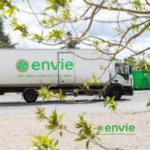Google Ad Grants Mistakes: 10 to Avoid
Google Ad Grants offre une opportunité exceptionnelle pour les associations à but non lucratif. Avec un budget mensuel de 10 000 $, il est possible d’accroître la visibilité et de mobiliser plus de personnes pour soutenir votre cause. Cependant, de nombreuses associations commettent des erreurs qui limitent l’efficacité de leurs campagnes. Voici les 10 erreurs les plus courantes et comment les éviter.
1. Confusing a standard Google Ads account with Google Ad Grants
It's important to understand that Google Ad Grants isn't a standard Google Ads account. Activating the Grants program requires specific settings and rules. For example, setting up standard billing is prohibited. Make sure you activate the program correctly to avoid having your account blocked.
Trick : Check out the official documentation of Google Ad Grants to understand the differences and meet the requirements.
2. Do not add multiple administrators to the account
It's common for an account to be lost due to lack of access. To avoid this, add multiple administrators. This ensures continuity, even if a team member leaves the organization.
3. Forgetting to set up full tracking
Proper conversion tracking is crucial to optimizing your campaigns. Set clear goals:
Main conversions (e.g. registrations, donations)
Micro-conversions (e.g. scrolling, key page visits)
This data helps feed algorithms and improve performance.
Recommended tool: Google Tag Manager to easily track your micro-conversions.
4. Use manual CPC bidding
With Ad Grants, manual bidding is limited to 2 $. To bypass this limit, use smart bidding strategies like “Maximize Conversions” or “CPA Target.” This allows you to achieve higher CPCs (5-10 $) and improve your competitiveness.
5. Group all keywords into one ad group
An ad group should be cohesive. Each group should contain closely related keywords and relevant ads. This improves your Quality Score and, consequently, the performance of your campaigns.
6. Drive all traffic to the homepage
Sending users to the homepage is a major mistake. Instead, focus on specific landing pages that directly address the user's search intent.
Trick : Create a custom page for each key theme or action.
7. Creating too many campaigns
Too many campaigns dilute data. Limit yourself to 3-5 campaigns to consolidate conversions. Ideally, each campaign should generate at least 30 conversions per month to be effective.
8. Have average ads
Unconvincing ads won't perform well. Google recommends having at least:
15 varied titles containing your keywords
4 descriptions tailored to your goals
Experiment with different combinations to find the ones that work best.
9. Being too specific in choosing keywords
Keywords that are too specific can limit the reach of your ads. Conduct thorough research to select keywords with sufficient volume (>100 searches per month).
Trick : Use the tool Google Keyword Planner to identify relevant terms.
10. Targeting overly competitive keywords
Nonprofits are generally not in a position to compete for expensive and competitive keywords. Focus on niche keywords directly related to your mission.
Conclusion
Managing an effective Google Ad Grants campaign takes time and expertise. These common mistakes can be avoided with proper planning and a well-defined strategy. Need help maximizing the impact of your campaigns? Ads for Change supports nonprofits in creating, managing, and optimizing their campaigns. Contact us to take your digital strategy to the next level.



